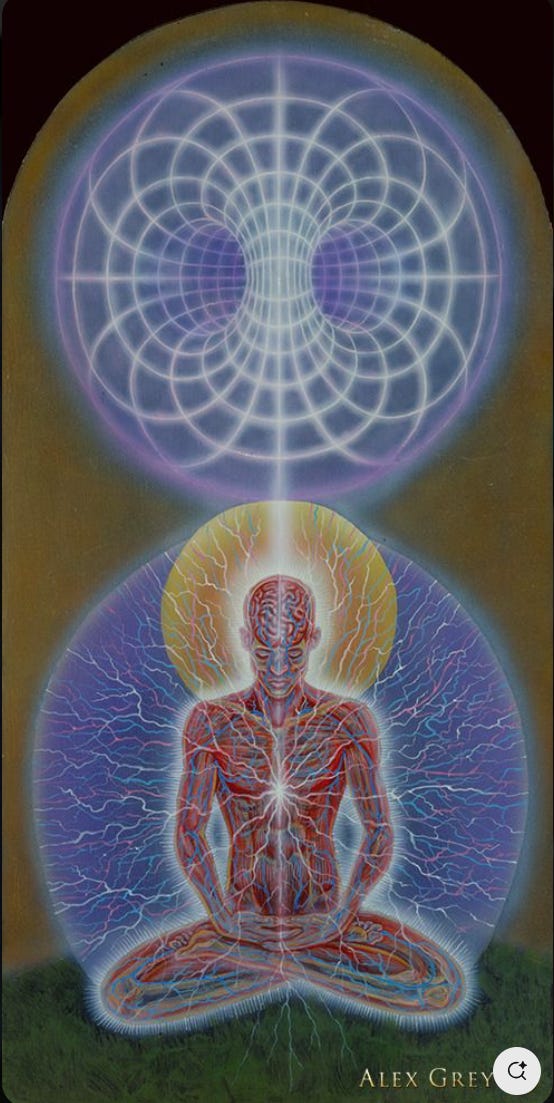Copernicus in a New Age
Man is not the center of the universe, and the universe is not the center of reality.
Part I — Physical Cosmology
In 1543, Copernicus published his thesis: The motion of the planets makes a lot more sense if the sun is the center of the system, rather than the earth. There were ancient peoples who had known this truth for thousands of years. (Alignment of some ancient megaliths and the Antikythera Mechanism are proofs of this.) But the Catholic Church was not ready for this idea, and indeed Giordano Bruno was burned at the stake 57 years later for such heresy.
Fun fact: The origin of the word “revolution” as Marx and Kuhn used the term was when Copernicus changed the foundations of cosmology in the Western World by demonstrating that the earth revolves about the sun.
The larger meaning of the Copernican Revolution is that there is nothing special about our position in the universe. In the 20th century, the Copernican Principle was formulated:
There is nothing special about our place in the universe. Humans are a typical, evolved form of life. The earth is a typical planet, revolving around the sun, which is a typical star, in a typical position ⅔ of the way out from the center of a typical spiral galaxy. Our galaxy seems to be part of a rather large supercluster of galaxies, but that, too, is typical because most galaxies are in superclusters, and there are more galaxies in the largest superclusters. — The Copernican Principle
The Copernican Principle implies the Cosmological Principle, which is a foundation of Big Bang Cosmology. The Copernican Principle says that the universe would look the same from any other position as it looks to us from earth. The Cosmological Principle says that — on the largest scale — the universe is homogeneous.
Homogeneous means smooth, the same from place to place wherever you look. Obviously, the inside of a star is different from empty space, and within a galaxy is different from outside a galaxy. But the current version of the Cosmological Principle says that if you zoom way out to the largest scales, the universe is uniform. The universe is made of clusters of clusters of galaxies, or “superclusters”, and superclusters are uniformly distributed through space.
All of Big Bang cosmology is based on the Cosmological Principle, and it may or may not be true.
On the one hand, we have theory: if the universe has structure on the largest scale — if it is clumpy or rotating, or if there are gaps so large that they encompass a significant fraction of the part of the universe that we can see, then the Einstein Field Equations become so complicated that we can’t solve them. So everything we think we know about cosmology depends on it. This goes well beyond the presently standard version of the Big Bang, which is called ΛCDM. Even if ΛCDM turns out to be wrong, we still need the Cosmological Principle to make calculations about the large-scale structure and evolution of our universe.
On the other hand, as our ambitious efforts to map the sky with the aid of giant telescopes feeding their data directly to computer maps, we see larger and larger structures. The largest structures yet mapped are called the Local Supercluster and the Great Void. Both are uncomfortably close to the size of the visual universe — but still small enough that for those who have devoted their careers to working out implications of ΛCDM, they’re not yet forced to find a new career.
But close, as I wrote last month.
Part II — The Expanded Copernican Principle
The above is background for what I now wish to propose as an expanded version of the Copernican Principle.
I’ve been reading Seth Speaks, channeled by Jane Roberts in 1970, and Bottoming Out the Universe, by Richard Grossinger. The former presents an expanded view of reality so radically different from our present conception that it supports the “author”s claim that he is an incorporeal spirit from a realm far vaster than our physical universe. In other words, if this material comes from the subconscious of Jane Roberts, she was gifted with an imagination of stupendous scope. The latter is a poetic and scientific rendering of Seth’s cosmology, with prose that uses imagery, story, and paradox to reach inside us and expand our imaginations to meet Seth.
So what follows are tenets of my Expanded Copernican Principle
Our human intelligence is just one kind among many, one vantage among many. There are other minds that have their own ways of perceiving and interpreting the universe, and they are as valid as our own.
Our consciousness is just one kind of consciousness. As we explore the universe to find other intelligent life (as we open to contact with other intelligent life that has already found us), expect to find perspectives that are as different from ours as our perspective is different from an octopus — which has most of its brain distributed on 8 tentacles that see, touch, and taste their environment separately, and pigment their skin appropriately (for camouflage) to match what their tentacles see underneath.
Our kind of universe was created by our kind of consciousness, and other kinds of consciousness have created other entire universes.
N.B. In physical cosmology, “other universes” are, by definition, completely unreachable from our universe; hence in conventional science, the “multiverse hypothesis” is unscientific because unfalsifiable. However, consciousness can commune with other consciousness via non-physical media, so these other universes may be knowable, for example through channelers such as Seth and Jane Roberts.
your soul…programs its own existences and lifetimes…the various personalities it programs spring into consciousness and song, and in turn create realities that may have been undreamed of by the [soul] itself.
Each such personality [has] mental equipment [that] is highly tailored to meet very specialized environments. It has full freedom, but it must operate within the context of existence to which it has been programmed…
Each personality has within it the ability not only to gain a new type of existence in … physical reality, but to add creatively to the very quality of its own consciousness, and in so doing to work its way through the specialized system, breaking the barriers of reality as it [has been experienced].
Your idea of the soul is indeed limited by your three-dimensional concepts. [Your soul] has a far more creative and complicated nature than even your religions have ever granted it. It utilizes numberless methods of perception, and it has at its command many other kinds of consciousness. [Many kinds of consciousness from each soul!] The soul can change the focus of its consciousness, and uses consciousness as you use the eyes in your head.
— Seth, as channeled through JR
From Grossinger:
If intelligence was antecedent to the Big Bang…then the implosion was a shift of reflection in something already present, a fata morgana of dimensional tilt. There was no sequence of universes or multiverses nor quietudes between them—no intermission for cosmogenesis. Sacred sigils flowed through timeless catacombs as dark energy, dark matter—dark knowledge.
Gravity, heat, light, fission, and fusion—the expanding dispersion of energy and matter—emerge out of our collective intelligence along with nebulae in deep space, breezes off seas, schools of fish, and deer passing between copses. That means not only our conscious intelligence but also the unconscious intelligence of all beings in cosmic and spiritual planes, and the core universe itself—the translation of All That Is into All That Is, as each dimension expresses itself in the parameters of another.
— Bottoming Out the Universe
And the picture that Grossinger paints for us is but one of many universes created by our Consciousness, and our (universal, big “C”) Consciousness is but one of many consciousnesses, each of which is capable of creating a variety of universes.
“Or if…you make it weaver of the etherial light, space, solids, motion, and the dream of time — why still, ’tis being looking from the dark, the core, the centre of your consciousness, that notes your bubble-world” — Mary Ann Evans
Now some of you who read this book will immediately and intuitively grasp what I am saying, for you will have already suspected that you are viewing experience through highly distorted, though colorful, figurative lenses. Remember also that if physical reality is in a larger sense an illusion, it is an illusion caused by a greater reality. The illusion itself has a purpose and a meaning.
Perhaps it is better to say that physical reality is one form that reality takes. In your system, however, you are focused much more intensely upon one relatively small aspect of the totality of experience. — Seth
My Summary and Conclusion
Our entire reality — physical, metaphysical, mental, psychical, and spiritual — is just one reality among many. Its scope is of medium breadth, not so narrow as some realities, nor so expansive as others.
As we grow over many, many lifetimes in environments that grow more and more different, we expand our ability to perceive and to create broader realities. We think of this progression as taking place over vast periods of time, but that is because time is the only dimension available to our imaginations in which we can embed growth and expansion. Time itself is part of the illusion that we will leave behind as we expand through — through what? metatime? hypertime? whatever dimension in which space-time is embedded, and which becomes available to us when we depart for larger realities.






I have never taken psychedelics, but I imagine that others who do are the source and inspiration for this material.
Great article. Very thought provoking. We have no idea about the consciousness of other being and how for example an octopus experiences the world. I need to read Seth Speaks.